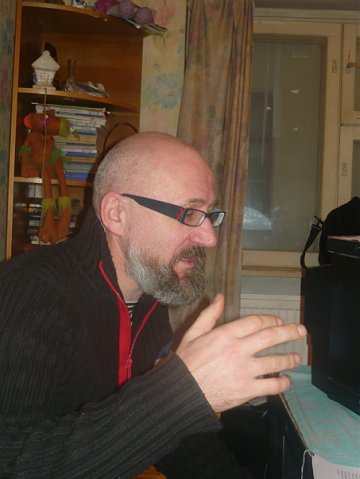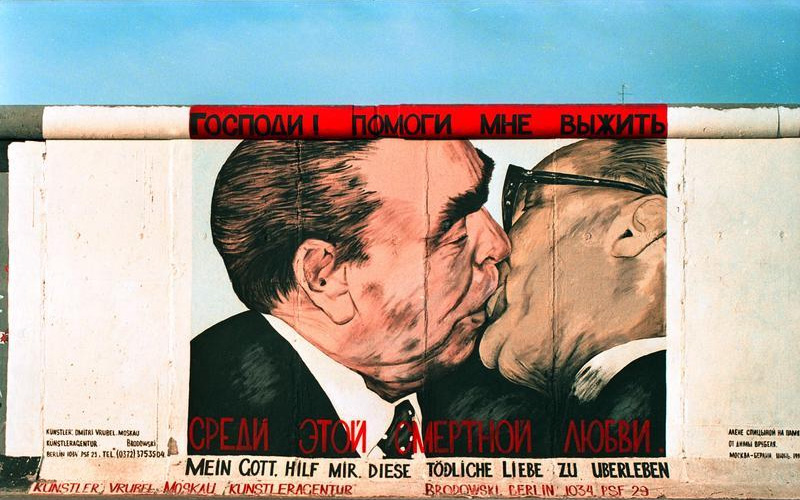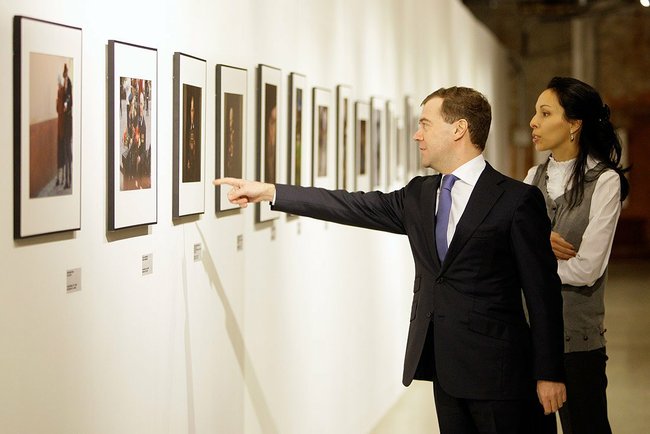|
Marat Gelman
Marat Aleksandrovich GelmanOfficial (in the passport) Latin-graphics spelling of his last name is Guelman as in French. (russian: Марат Александрович Гельман; born 24 December 1960) is a Russian collector, gallerist, and an op-ed columnist. The former director of PERMM contemporary art museum in Perm. The deputy director of Channel One from June 2002 to February 2004. A political consultant, a co-founder of the Foundation for Effective Politics, and a member of Russia's Public Chamber (2010–2012 convocation). Guelman has lived in Montenegro since 2014. Biography Marat Guelman was born on 24 December 1960 in Chişinău. His father is the writer and playwright Alexander Isaakovich Gelman. Upon finishing high school 34 in Chişinău in 1977, Marat Guelman went on to study at Moscow Electrotechnical Institute of Communications while working as a mechanic and a sceneshifter at Moscow Academic Art Theater, Sovremennik and Mayakovsky Theatre. He graduat ... [...More Info...] [...Related Items...] OR: [Wikipedia] [Google] [Baidu] |
European Stability Initiative
The European Stability Initiative (ESI) is a think tank focusing on South East Europe and enlargement of the European Union. It has offices in Berlin, Brussels and Istanbul. History The ESI was founded in June 1999 in Sarajevo. Its founders, multi-national practitioners and analysts, were members of international organisations like the OSCE, the United Nations or the World Bank.Einer, der auszog, Europa zu verstehen (German). ''''. Retrieved January 2017 It was founded as a research network to advance the integration of the into the |
AES+F
AES+F is a collective of four Russian artists: Tatiana Arzamasova (born 1955), Lev Evzovich (born 1958), Evgeny Svyatsky (born 1957), and Vladimir Fridkes (born 1956). It was first formed as AES Group in 1987 by Arzamasova, Evzovich, and Svyatsky, becoming AES+F when Fridkes joined in 1995. The collective works in photography, video, installation, and animation, as well as more traditional media, such as painting, drawing, and sculpture. AES+F's early work included performance, installation, painting, and illustration. Well known for their monumental video-art installations that Gareth Harris describes as "monumental painting set in motion", AES+F create grand visual narratives that explore contemporary global values, vices and conflicts. Members Tatiana Arzamasova Tatiana Arzamasova was born in 1955 in Moscow, where she graduated from Moscow Architectural Institute ( MArchI) – State Academy in 1978. Prior to founding AES Group, Arzamasova was a conceptual architect. She ... [...More Info...] [...Related Items...] OR: [Wikipedia] [Google] [Baidu] |
Oleg Kulik
Oleg Borisovich Kulik (russian: Оле́г Бори́сович Кули́к; born 1961 in KiyvOleg Kulik on gif.ru on tvgallery.ru) is a -born Russian performance artist, sculptor, photographer and curator. He is best known for his controversial artistic performances in which he acted like a dog. Life and art Kulik was born in Kiyv, graduated fromShevchenko State Art School ...
[...More Info...] [...Related Items...] OR: [Wikipedia] [Google] [Baidu] |
Mitki
The Mitki (russian: Митьки́; ) are an art group in St. Petersburg, Russia. The Mitki movement The Mitki movement originally emerged from Vladimir Shinkarev’s literary work ''Mitki'', which consists of eight chapters. The first five chapters were written between 1984 and 1985, though the book was not finished until four years later. The complete version was officially published in 1990. It encompasses a collection of ironic and absurd essays, anecdotes, conversations and opinions on different cultural subjects, which extend artistic sensibility and development into a comprehensive and cohesive life philosophy that even includes a specifically developed language. Although Mitki is fictional it draws on the characteristics of real people, combining these to create Mityok, the archetypal member of the Mitki group who acts on the instructions provided by the Mitki script. The Mitki group consisted of a number of St. Petersburg friends and artists of which were the main members ... [...More Info...] [...Related Items...] OR: [Wikipedia] [Google] [Baidu] |
Timur Novikov
Timur Petrovich Novikov (September 24, 1958, Leningrad – May 23, 2002, St. Petersburg) was a Russian visual artist, designer, art theorist, philosopher, and musician. He is considered one of the most influential proponents of Nonconformist Art before and after the dissolution of the Soviet Union in 1991. Life and work As he grew up in the Soviet Union, Novikov experienced its cultural and political constraints. His artistic education began at the age of seven at the House of Pioneers in Leningrad (now St. Petersburg), and later at the Young Art Historians Club at the Russian Museum in the same city. In 1977 he became a member of the Letopis (Chronicles) art group; and in 1982 he founded the Новый художник (New Artists) movement. During the 1980s Novikov worked at the Russian Museum and enjoyed access to its collection and archive, as well as close working relationships with its curators. This connection lasted to when he started work as an artist. In 1990 a ... [...More Info...] [...Related Items...] OR: [Wikipedia] [Google] [Baidu] |
Russian Postmodernism
Russian postmodernism refers to the cultural, artistic, and philosophical condition in Russia since the downfall of the Soviet Union and dialectical materialism. With respect to statements about post-Soviet philosophy or sociology, the term is primarily used by non-Russians to describe the state of economic and political uncertainty they observe since the fall of communism and the way this uncertainty affects Russian identity. 'Postmodernism' is, however, a term often used by Russian critics to describe contemporary Russian art and literature. Artistic origins In art, postmodernism entered the Soviet Union in the 1960s after the end of the Stalinist move toward liberalization with the advent of the Russian conceptualist movement. Beginning as an underground political-artistic move against the use of Socialist realism as a method of social control and becoming a full-fledged movement with the Moscow Conceptualists, Russian conceptualism used the symbolism of Socialist realism a ... [...More Info...] [...Related Items...] OR: [Wikipedia] [Google] [Baidu] |
Sots Art
Often referred to as “Soviet Pop Art”, Sots Art or soc art (russian: Соц-арт, short for Socialist Art) originated in the Soviet Union in the early 1970s as a reaction against the official aesthetic doctrine of the state— socialist realism, which was marked by reverential depictions of workers, peasants living happily in their communes, and, during Stalinism, a young, fit Joseph Stalin. Vitaly Komar and Alexander Melamid are credited with the invention of the term "Sots Art"; in an analogy with the Western pop art movement, which incorporated the kitchy elements of the Western mass culture, sots art capitalized on the imagery of the Socialist mass culture. According to Arthur Danto, Sots Art's attack on official styles is similar in intent to American pop art and German capitalist realism.Arthur Coleman Danto, ''After the End of Art: contemporary art and the pale of history'', Princeton University Press, 1997, p126. Artists * Grisha Bruskin * Eric Bulatov * Vi ... [...More Info...] [...Related Items...] OR: [Wikipedia] [Google] [Baidu] |
Dmitri Prigov
Dmitri Aleksandrovich Prigov (russian: Дми́трий Алекса́ндрович При́гов, 5 November 1940 in Moscow – 16 July 2007 in MoscowDmitri Prigov, leader of conceptualist school, dies at age 66 news agency AP via ''International Herald Tribune'', 16 July 2007) was a Russian writer and artist. Prigov was a during the era of the and was briefly sent to a |
Moscow Conceptualists
The Moscow Conceptualist, or Russian Conceptualist, movement began with the Sots art of Komar and Melamid in the early 1970s, and continued as a trend in Russian art into the 1980s. It attempted to subvert socialist ideology using the strategies of conceptual art and appropriation art. It was an artistic counterpoint to Socialist Realism, and the artists experimented aesthetically in a wide range of media, including painting, sculpture, performance, and literature. The central figures were Dmitri Prigov, Ilya Kabakov, Irina Nakhova, Viktor Pivovarov, Eric Bulatov, Andrei Monastyrski and Komar and Melamid. Mikhail Epstein, in ''After the Future: The Paradoxes of Postmodernism and Contemporary Russian Culture'' (1995) explains why conceptualism is particularly appropriate to the culture and history of Russia, but also how it differs from Western Conceptualism: Epstein (1995) quotes Ilya Kabakov: The Moscow Conceptualist artists faced difficulties exhibiting their work in the cu ... [...More Info...] [...Related Items...] OR: [Wikipedia] [Google] [Baidu] |
Moscow Contemporary Art Center Winzavod
Winzavod (russian: Винзавод; ''Vinzavod'', literally winery) is a centre for contemporary arts in Moscow, Russia. Opened in 2007, it is located in a complex of seven industrial buildings from the late 19th century including the former brewery (and later winery) called "Moscow Bavaria". Alexander Brodsky is the coordinator of the project. Estate of Princess Volkonskaya Captain of the Guards regiment Mel’gunov, the first owner of a large estate situated in modern Mruzovskomu on the corner 4th streets BANKS, sold his estate to his own sister, Princess Catherine Volkonskaya. She was an outstanding Moscow lady and mistress of the Sukhanov Moscow region, and she had the nickname "Aunt Warrior" for her decisive power over her nephew, Peter Volkonsky, the Chief of Staff of Kutuzov. In 1805, Monin bought the manor. After four years in 1810, Nicephorus Prokofiev opened a malt-brewing factory on its territory. In early 1821, the estate passed on to Revel shopkeeper Frederick Dani ... [...More Info...] [...Related Items...] OR: [Wikipedia] [Google] [Baidu] |
Illya Chichkan
Illya Chichkan ( ua, Ілля Аркадійович Чичкан, born 29 August 1967 in Kiev, Ukraine) is a representative of the art movement "Ukrainian New Wave", which developed in the 1990s. He is a third generation artist. He lives and works in Berlin, Germany, and Kyiv, Ukraine, as a painter, author of installations, photo and video-projects. In 2014, Chichkan along with his wife Masha Shubina, had visited India, a trip of which he was dreaming since childhood. There, during winter season, he paints his paintings. Ilya Chichkan have a daughter, Sasha, a co-author of ''Psychodarwinism''. In a dialogue Marat Gelman with Kostyantyn Doroshenko they expressed interesting thoughts about the exhibition New «Psychodarwinism». The Ukrainian artist took it as a basis famous paintings of the Tretyakov Gallery grotesquely depicting the main characters in the form of monkeys. Analyzing the artist's blasphemous gesture Doroshenko remarked: "Imperial totalitarian society puts art on ... [...More Info...] [...Related Items...] OR: [Wikipedia] [Google] [Baidu] |



